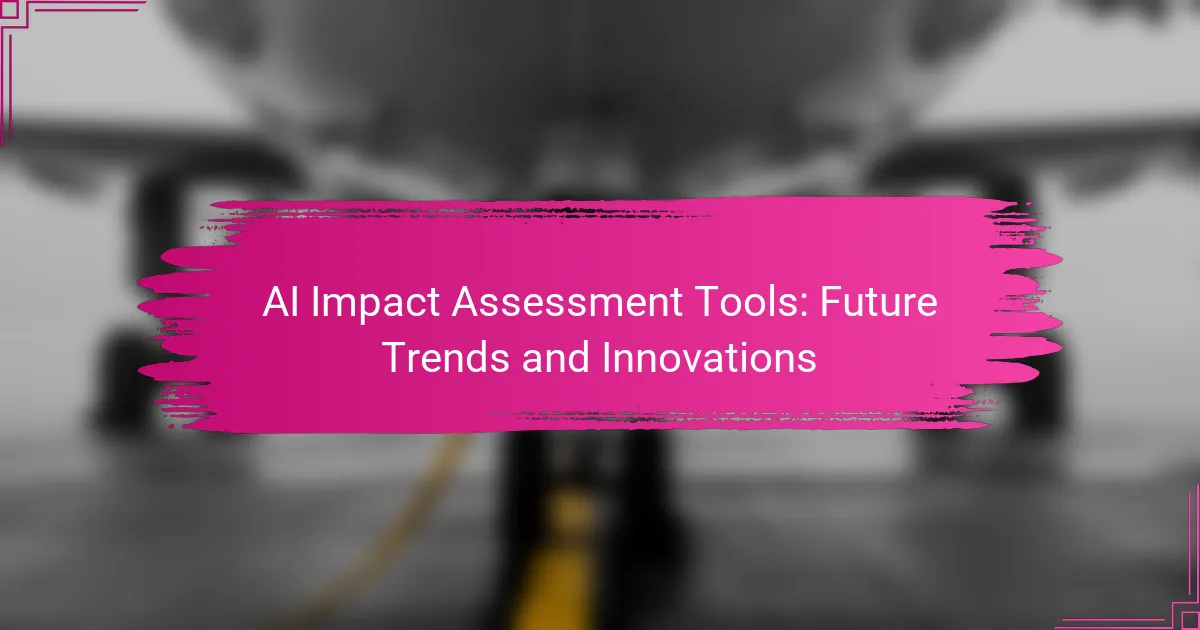As artificial intelligence continues to evolve, the development of AI impact assessment tools becomes increasingly vital for organizations. These tools systematically evaluate the ethical, social, and economic implications of AI systems, ensuring that stakeholders are informed about potential risks and benefits. By facilitating responsible AI deployment, they play a crucial role in guiding organizations towards informed decision-making in a rapidly changing technological landscape.
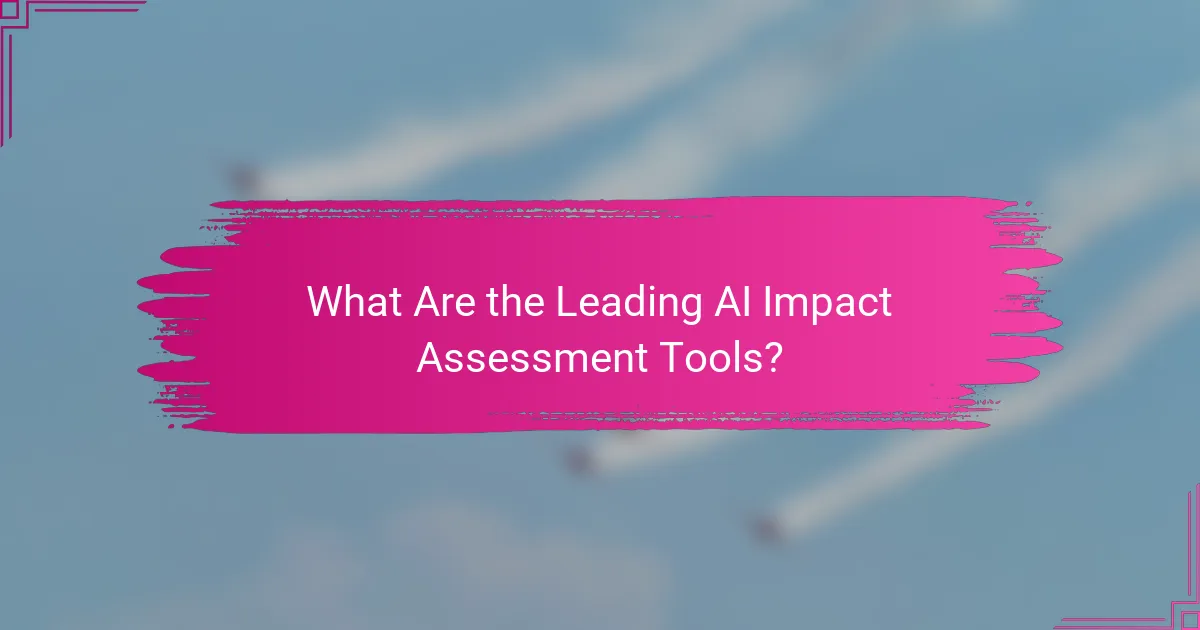
You can learn more in AI Impact Assessment Tools.
What Are the Leading AI Impact Assessment Tools?
The leading AI impact assessment tools are designed to evaluate the effects of AI systems on various aspects such as ethics, performance, and compliance. These tools help organizations understand potential risks and benefits, guiding responsible AI deployment.
Tool A: IBM Watson
IBM Watson offers a suite of AI impact assessment tools that focus on transparency and accountability. It utilizes advanced algorithms to analyze data and provide insights on ethical implications, bias detection, and compliance with regulations.
When using IBM Watson, organizations should consider its integration capabilities with existing systems. It supports various data formats and can be customized to meet specific industry needs, making it versatile for different applications.
Tool B: Microsoft Azure AI
Microsoft Azure AI provides comprehensive tools for assessing the impact of AI solutions, emphasizing ethical AI practices. It includes features for monitoring AI performance, ensuring fairness, and adhering to legal standards.
Users can leverage Azure’s built-in analytics to evaluate model outcomes and adjust parameters accordingly. This iterative process helps in fine-tuning AI systems to minimize unintended consequences while maximizing effectiveness.
Tool C: Google Cloud AI
Google Cloud AI offers robust impact assessment tools that focus on scalability and accessibility. Its features include automated bias detection and tools for measuring the societal impact of AI applications.
Organizations should take advantage of Google Cloud’s extensive documentation and community support. This can facilitate smoother implementation and help teams navigate common challenges associated with AI assessments.
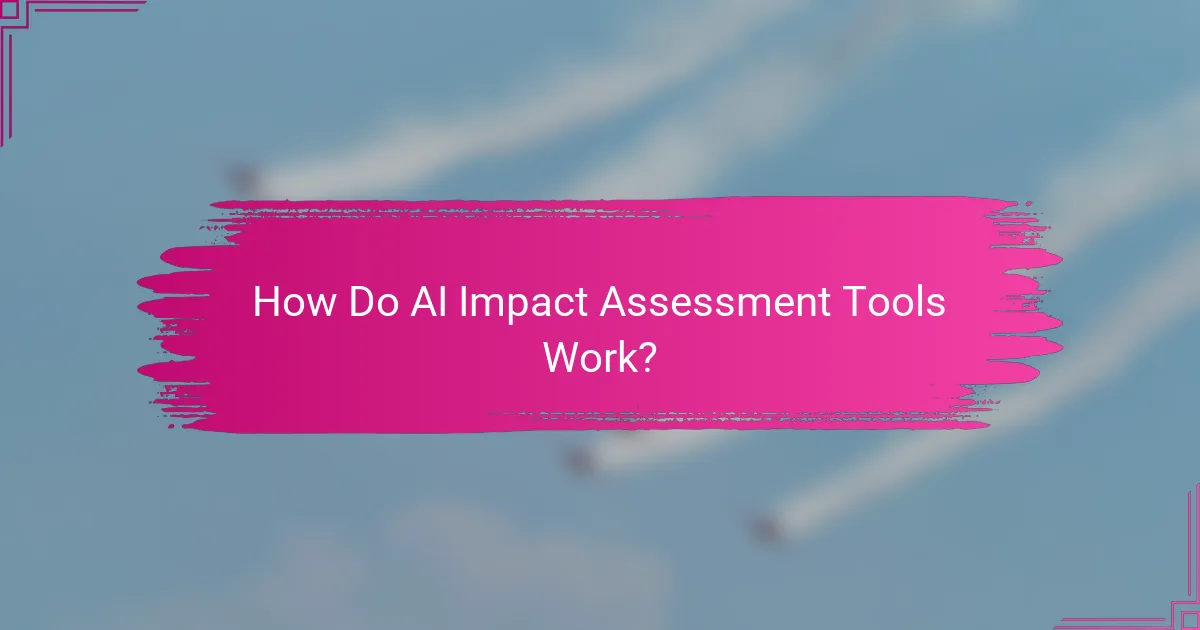
How Do AI Impact Assessment Tools Work?
AI impact assessment tools evaluate the potential effects of artificial intelligence systems on various aspects of society, including ethical, social, and economic factors. They typically involve data collection, analysis, and reporting to inform stakeholders about the implications of deploying AI technologies.
You can explore more about these tools in AI impact assessment tools.
Data Collection Methods
Data collection for AI impact assessments often involves both qualitative and quantitative approaches. Surveys, interviews, and focus groups can gather insights from affected communities, while existing datasets may provide statistical evidence of potential impacts.
Utilizing diverse data sources enhances the robustness of assessments. For instance, combining user feedback with demographic data can reveal trends and disparities in AI effects across different population segments.
Analysis Techniques
Analysis techniques in AI impact assessments include statistical modeling, scenario analysis, and risk assessment frameworks. Statistical models can predict outcomes based on historical data, while scenario analysis explores various potential futures based on different AI deployment strategies.
Risk assessment frameworks help identify and prioritize potential negative impacts, allowing organizations to develop mitigation strategies. For example, a framework might categorize risks as high, medium, or low, guiding decision-makers in resource allocation and policy development.
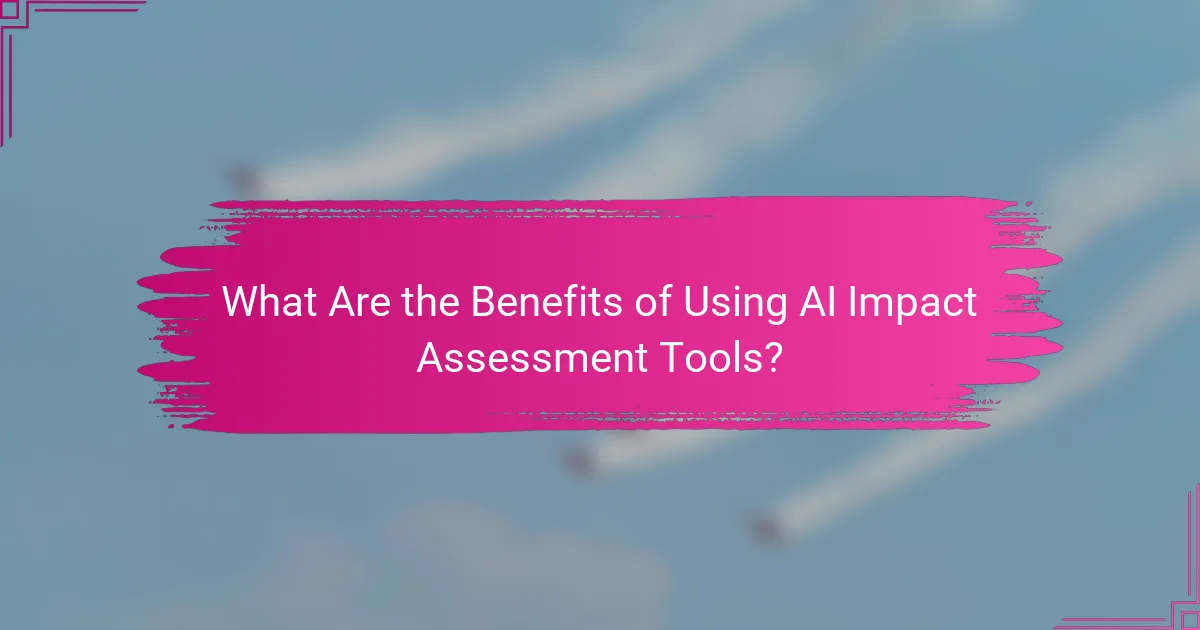
What Are the Benefits of Using AI Impact Assessment Tools?
AI impact assessment tools provide organizations with a structured approach to evaluate the potential effects of AI systems. These tools help identify benefits, risks, and ethical considerations, enabling informed decision-making and responsible AI deployment.
Improved Decision-Making
AI impact assessment tools enhance decision-making by providing data-driven insights into the implications of AI technologies. They allow stakeholders to visualize potential outcomes and trade-offs, leading to more informed choices regarding AI implementation.
For example, organizations can use these tools to assess how an AI system might affect customer satisfaction or operational efficiency. By weighing these factors, decision-makers can prioritize projects that align with strategic goals and ethical standards.
Enhanced Risk Management
Utilizing AI impact assessment tools significantly improves risk management by identifying potential hazards associated with AI applications. These tools facilitate the early detection of biases, security vulnerabilities, and compliance issues, which can mitigate negative impacts before they occur.
Organizations can adopt a proactive approach by regularly conducting assessments throughout the AI lifecycle. This includes evaluating data sources, model performance, and user feedback to ensure that risks are managed effectively and regulatory requirements are met.
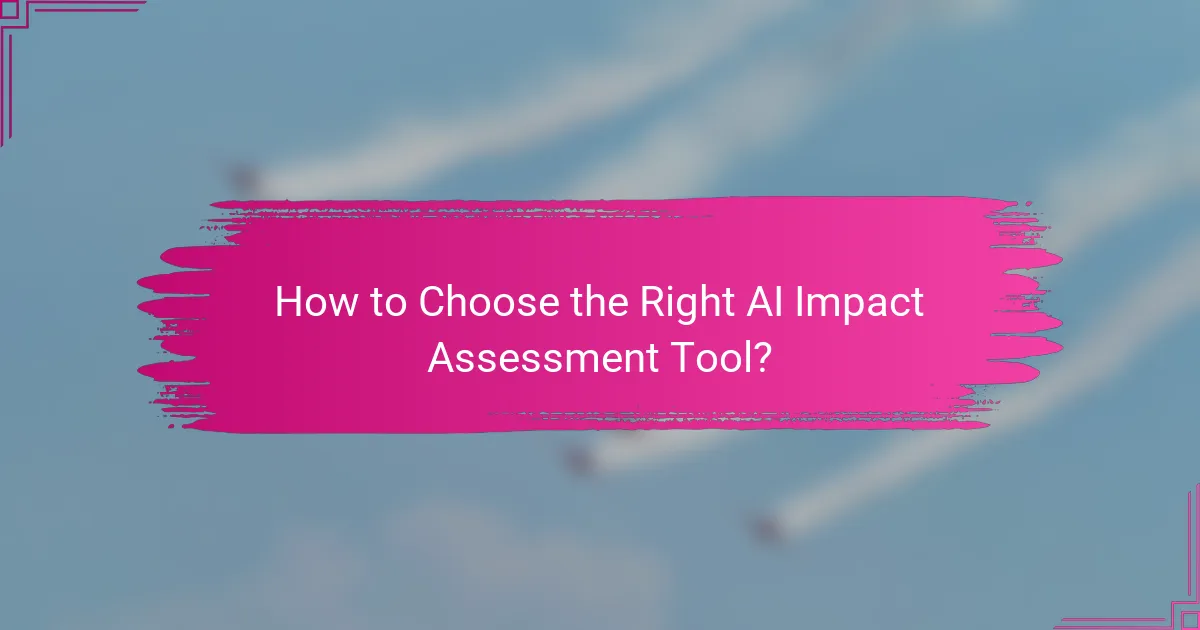
How to Choose the Right AI Impact Assessment Tool?
Selecting the right AI impact assessment tool involves understanding your specific needs, the tool’s capabilities, and how it aligns with your organizational goals. Consider factors such as usability, compliance with regulations, and the ability to provide actionable insights.
Criteria for Selection
When choosing an AI impact assessment tool, prioritize criteria such as ease of use, integration capabilities, and the comprehensiveness of the assessment metrics. Look for tools that can adapt to your industry standards and regulatory requirements, ensuring they can effectively evaluate AI systems in your context.
Additionally, consider the tool’s scalability and support services. A tool that can grow with your organization and offers robust customer support can save time and resources in the long run.
Comparison of Features
Different AI impact assessment tools offer various features that cater to distinct needs. Common features to compare include data privacy assessments, bias detection capabilities, and reporting functionalities. For instance, some tools may provide real-time monitoring, while others focus on post-deployment evaluations.
To facilitate your comparison, create a simple table listing key features against each tool. This can help visualize which tool aligns best with your requirements. Pay attention to user reviews and case studies to gauge how effectively each tool performs in real-world scenarios.
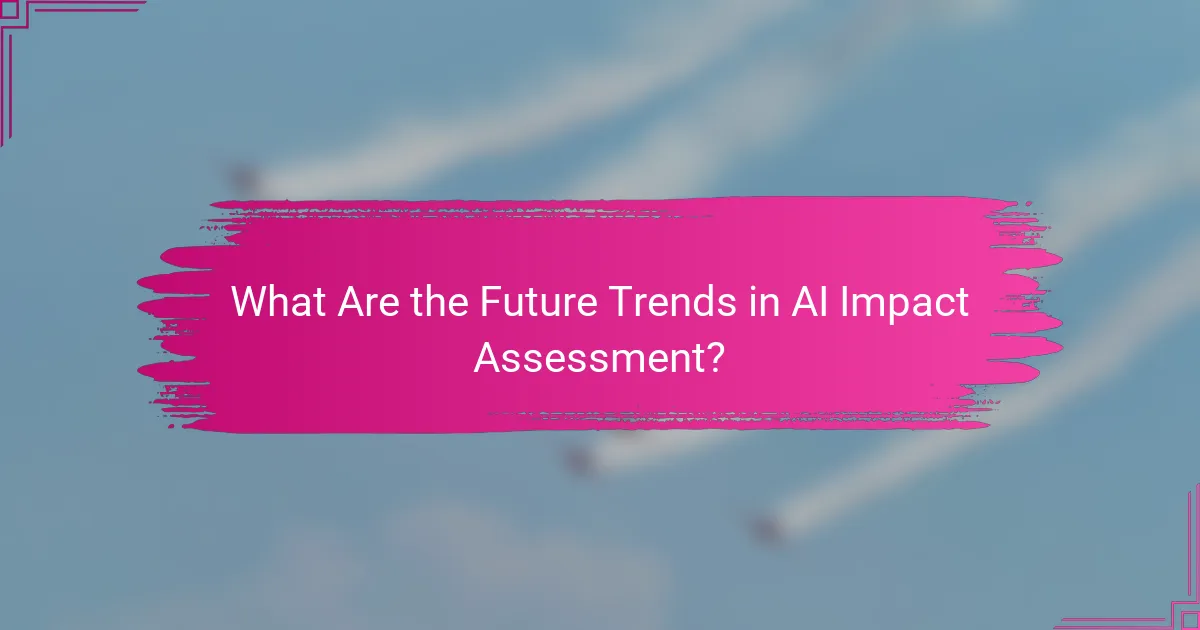
What Are the Future Trends in AI Impact Assessment?
The future of AI impact assessment is characterized by enhanced integration with various technologies and increased automation. These trends aim to improve the efficiency and accuracy of assessments, enabling organizations to better understand the implications of AI deployments.
Integration with Other Technologies
AI impact assessment tools are increasingly being integrated with other technologies such as blockchain, IoT, and big data analytics. This integration allows for more comprehensive data collection and analysis, leading to richer insights into the potential impacts of AI systems.
For example, combining AI assessments with IoT data can provide real-time insights into how AI systems interact with their environments. This synergy can help organizations identify risks and opportunities more effectively.
Increased Automation
Automation is set to play a significant role in the future of AI impact assessments. By automating data collection and analysis processes, organizations can reduce human error and speed up the assessment timeline. This can lead to more timely decision-making regarding AI implementations.
Tools that leverage machine learning algorithms can continuously improve their assessment capabilities by learning from past evaluations. However, organizations should ensure that automated systems are regularly monitored to maintain accuracy and compliance with relevant regulations.
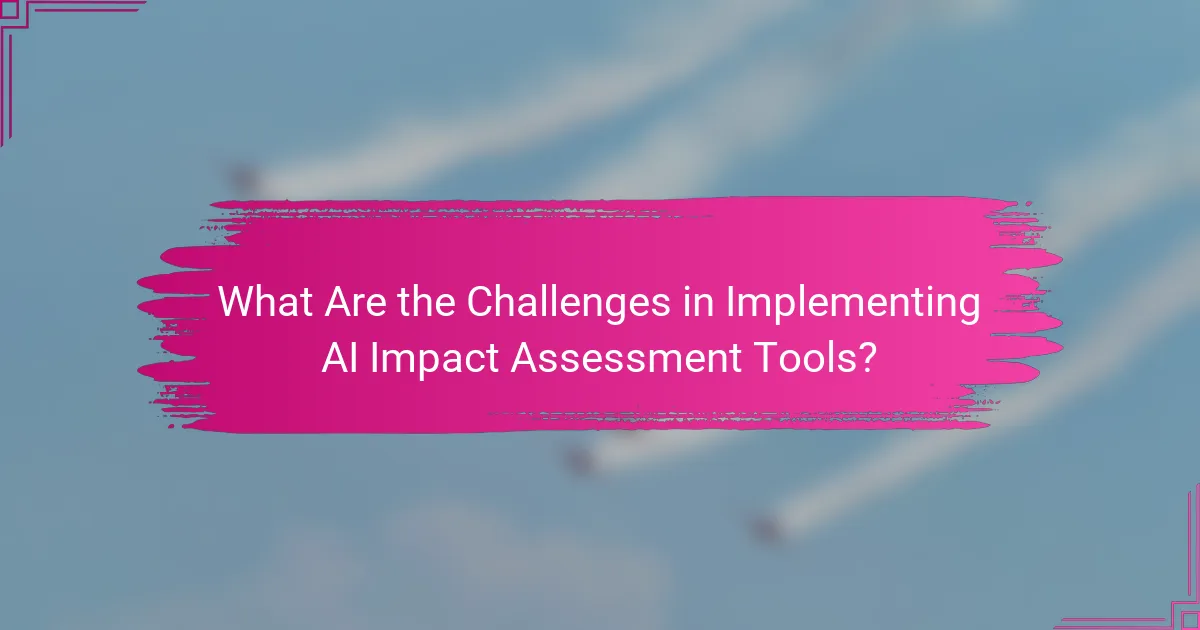
What Are the Challenges in Implementing AI Impact Assessment Tools?
Implementing AI impact assessment tools presents several challenges, primarily related to data privacy, integration complexity, and the evolving regulatory landscape. Organizations must navigate these obstacles to effectively evaluate the societal and ethical implications of their AI systems.
Data Privacy Concerns
Data privacy is a significant challenge when using AI impact assessment tools, as these tools often require access to sensitive personal information. Organizations must ensure compliance with regulations such as the General Data Protection Regulation (GDPR) in Europe or the California Consumer Privacy Act (CCPA) in the U.S., which impose strict guidelines on data handling.
To mitigate privacy risks, companies should implement data anonymization techniques and limit data access to essential personnel only. Regular audits and privacy impact assessments can help identify potential vulnerabilities and ensure adherence to privacy standards.
Integration Complexity
Integrating AI impact assessment tools into existing systems can be complex and resource-intensive. Organizations must consider the compatibility of these tools with their current IT infrastructure, which may require significant modifications or upgrades.
To simplify integration, businesses should adopt a phased approach, starting with pilot projects to test the tools in a controlled environment. Additionally, investing in training for staff can facilitate smoother adoption and help teams understand how to leverage these tools effectively.
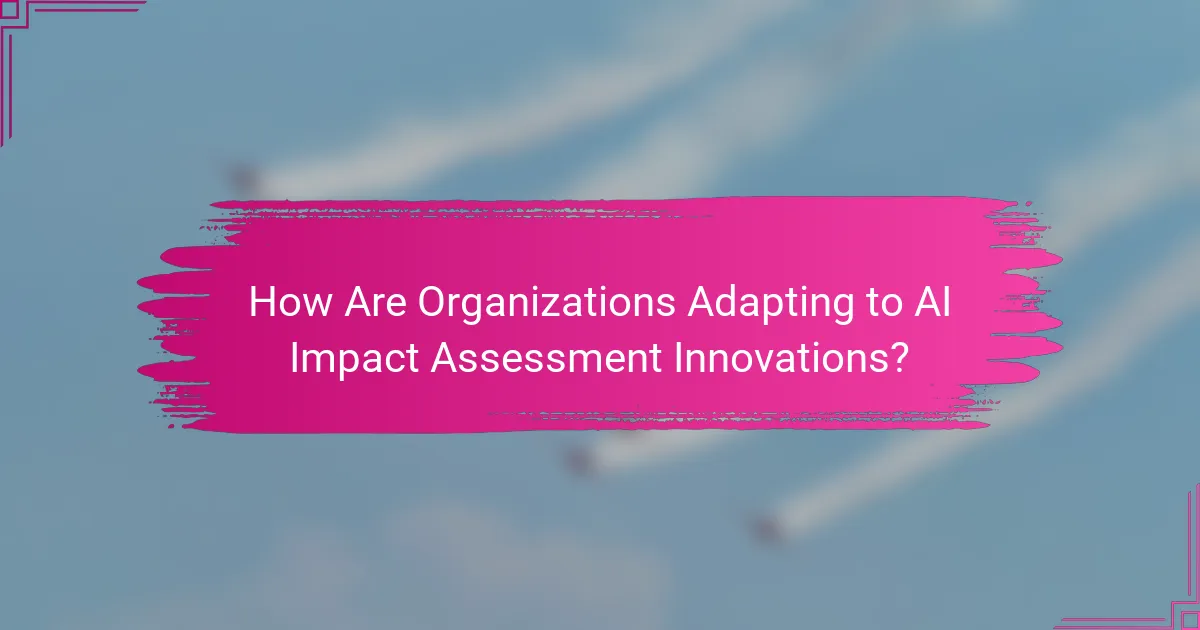
How Are Organizations Adapting to AI Impact Assessment Innovations?
Organizations are increasingly adopting AI impact assessment innovations to ensure ethical and responsible AI deployment. This involves integrating advanced tools and frameworks that evaluate the potential effects of AI systems on stakeholders, compliance with regulations, and overall societal impact.
Case Study: Company X
Company X, a leader in the tech industry, has implemented a comprehensive AI impact assessment framework that aligns with emerging regulations. By utilizing machine learning algorithms, they can analyze data sets to predict potential biases and adverse effects of their AI applications.
The company has established a cross-functional team that includes data scientists, ethicists, and compliance officers to regularly review AI projects. This collaborative approach ensures that all perspectives are considered, leading to more robust assessments and improved decision-making.
To enhance transparency, Company X shares its assessment findings with stakeholders and the public, fostering trust and accountability. They also provide training sessions for employees on the importance of ethical AI practices, which has significantly raised awareness and engagement across the organization.
